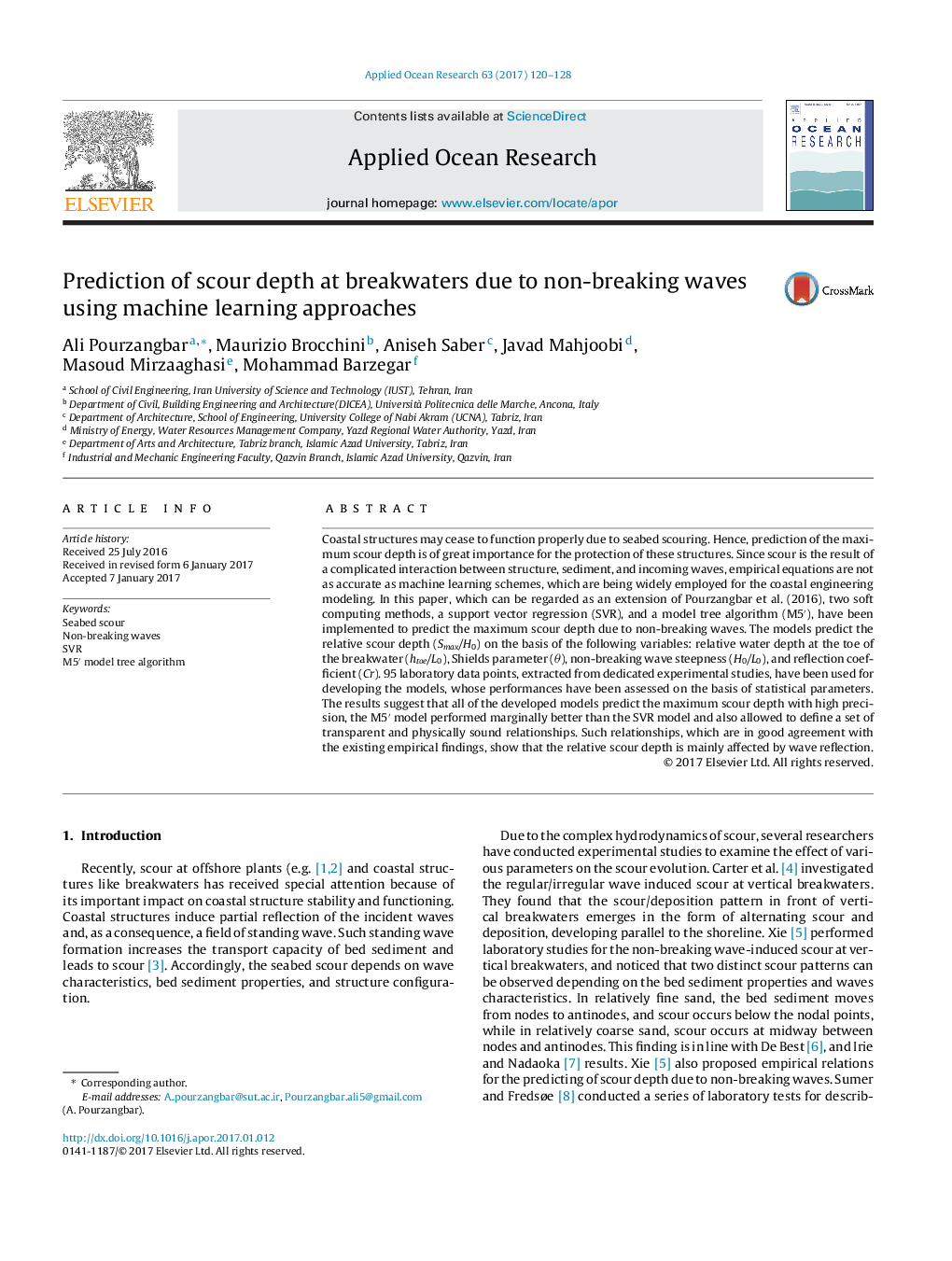| کد مقاله | کد نشریه | سال انتشار | مقاله انگلیسی | نسخه تمام متن |
|---|---|---|---|---|
| 5473210 | 1520240 | 2017 | 9 صفحه PDF | دانلود رایگان |
عنوان انگلیسی مقاله ISI
Prediction of scour depth at breakwaters due to non-breaking waves using machine learning approaches
ترجمه فارسی عنوان
پیش بینی عمق آبشستگی در موج شکن ها به دلیل امواج غیر شکستن با استفاده از روش های یادگیری ماشین
دانلود مقاله + سفارش ترجمه
دانلود مقاله ISI انگلیسی
رایگان برای ایرانیان
موضوعات مرتبط
مهندسی و علوم پایه
سایر رشته های مهندسی
مهندسی دریا (اقیانوس)
چکیده انگلیسی
Coastal structures may cease to function properly due to seabed scouring. Hence, prediction of the maximum scour depth is of great importance for the protection of these structures. Since scour is the result of a complicated interaction between structure, sediment, and incoming waves, empirical equations are not as accurate as machine learning schemes, which are being widely employed for the coastal engineering modeling. In this paper, which can be regarded as an extension of Pourzangbar et al. (2016), two soft computing methods, a support vector regression (SVR), and a model tree algorithm (M5â²), have been implemented to predict the maximum scour depth due to non-breaking waves. The models predict the relative scour depth (Smax/H0) on the basis of the following variables: relative water depth at the toe of the breakwater (htoe/L0), Shields parameter (θ), non-breaking wave steepness (H0/L0), and reflection coefficient (Cr). 95 laboratory data points, extracted from dedicated experimental studies, have been used for developing the models, whose performances have been assessed on the basis of statistical parameters. The results suggest that all of the developed models predict the maximum scour depth with high precision, the M5â² model performed marginally better than the SVR model and also allowed to define a set of transparent and physically sound relationships. Such relationships, which are in good agreement with the existing empirical findings, show that the relative scour depth is mainly affected by wave reflection.
ناشر
Database: Elsevier - ScienceDirect (ساینس دایرکت)
Journal: Applied Ocean Research - Volume 63, February 2017, Pages 120-128
Journal: Applied Ocean Research - Volume 63, February 2017, Pages 120-128
نویسندگان
Ali Pourzangbar, Maurizio Brocchini, Aniseh Saber, Javad Mahjoobi, Masoud Mirzaaghasi, Mohammad Barzegar,
